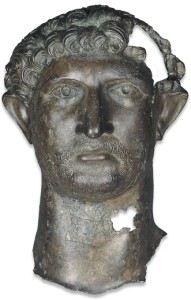Rebuilding for the Future
 Excerpted from Lawrence H. Schiffman, From Text to Tradition, Ktav Publishing House, Hoboken, NJ, 1991.
Excerpted from Lawrence H. Schiffman, From Text to Tradition, Ktav Publishing House, Hoboken, NJ, 1991.
As if history were repeating itself, recovery and the reinstitution of Jewish self-government ensued once again. With the accession of the emperor Antoninus Pius (138–161 C.E.), virtually all of Hadrian’s decrees were rescinded. The patriarchate and the high court were reconstituted at Usha, in the Galilee. Indeed, the two revolts contributed greatly to encouraging the Jewish population of Palestine to move from Judea to the north, settling primarily in the Galilee.
Under Rabban Simeon ben Gamaliel II, (first half of the second century C.E.) and later under Rabbi Judah the Prince (latter half of the second and beginning of the third century C.E.), the editor of the Mishnah, the patriarchate and the other institutions of the Jewish community reached their height. Taxes poured into the patriarchal coffers even from the Diaspora, where the emissaries of the rabbis of Palestine attempted to foster the spread of tannaitic Judaism.
With the exception of two restrictions, the ban on proselytism and the ban on Jews living in Jerusalem, Jewish life in this period was virtually unfettered. The latter restriction seems to have been often compromised. Under the Severan dynasty (193–225 C.E.) Jewish fortunes improved with the granting of a variety of legal privileges culminating in full Roman citizenship for Jews. The enjoyment of these privileges and the peace which Jewry enjoyed in the Roman Empire were interrupted only by the invasions by the barbarians in the West and the instability and economic decline they caused throughout the empire, and by the Parthian incursions against Roman territories in the East.
The latter years of Roman rule, in the aftermath of the Bar Kokhba Revolt and on the verge of the Christianization of the empire, were extremely fertile ones for the development of Judaism. It was in this period that tannaitic Judaism came to its final stages, and that the work of gathering its intellectual heritage, the Mishnah, into a redacted collection began. All the suffering and the fervent yearnings for redemption had culminated not in a messianic state, but in a collection of traditions which set forth the dreams and aspirations for the perfect holiness that state was to engender. As prayer had replaced sacrifice, Torah, in the form of the Mishnah, had now replaced messianism. A
different kind of redemption was now at hand.



